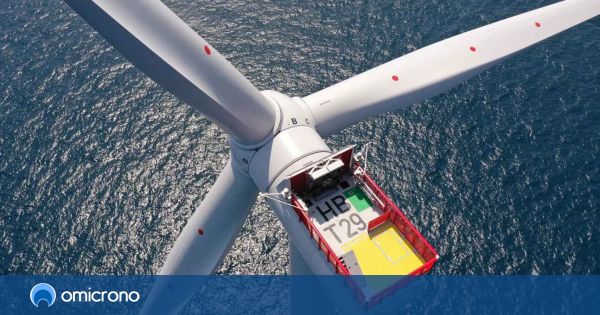Related news
Wind energy has become one of the main clean alternatives to reduce gas pollution. In Spain it constitutes more than 17% of the energy generating structure, but other countries have a larger stake, such as in the UK where it has operated largest offshore wind farm.
Danish company Orsted is responsible for this installation which promises to supply energy to more than 2.3 million homes in the UK from the sea. Last Saturday the Hornsea 2 project “gives its first power”, as the company announced.
With surface area 462 kilometers square this infrastructure will be able to hold the title of the world’s largest offshore wind farm, when fully operational next year. Then two more parks will come to reduce gas emissions to a minimum by 2050.
Hornsea 2
This wind turbine park is 89 kilometers from the east coast of Great Britain, where more than 100 Siemens Gamesa turbines will spin and are expected to have a capacity of more than 1.3 gigawatts. This means that when completed and at full capacity, the UK’s 2.3 million homes will benefit from the clean energy it produces.
Offshore wind farm
Omikrono
That this week’s announcement This is just the first step in the manufacture of this marine structure, the company installed in the area in late October an offshore substation (OSS), the world’s largest offshore AC substation and a reactive compensation station (RCS) with which it has been able to produce that first thrust.
In 2022, this initial set of substations will be upgraded to complete the entire wind farm with 165 wind turbine which will transfer energy via 373 km of cable from the matrix to OSS and RCS, to then reach the national grid via 390 km of offshore export cable and another 40 km ending at the onshore substation at Killingholme.
Two more projects
Patrick Harnett, program director for Hornsea 2 said of the commencement of these operations: “From here, we have the finish line in sight as we install the remaining turbines and continue to test, run and power our wind farm in the New Year”.
When the park is at full capacity, two other projects will follow, namely Hornsea 3 and 4 which is in the planning and approval stages. The Hornsea Zone where all this infrastructure will be installed seeks to increase the United Kingdom’s energy capacity in renewable energy to achieve your government’s goal of achieving net zero emissions by 2050.
You may also like…
Follow the topics you are interested in

“Problem solver. Proud twitter specialist. Travel aficionado. Introvert. Coffee trailblazer. Professional zombie ninja. Extreme gamer.”







